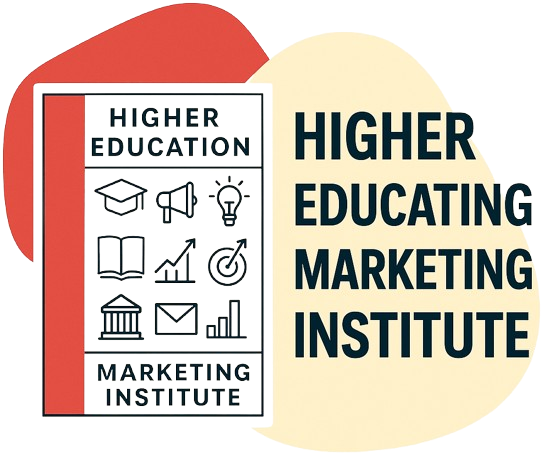Common themes:
- Importance of Digital Marketing:
- Utilizing digital marketing channels like social media and SEO.
- Leveraging data analysis, automation, and personalization in marketing strategies.
- Brand Identity and Unique Value Proposition:
- Emphasizing the significance of a strong brand identity.
- Highlighting unique strengths and educational approaches.
- Continuous Improvement and Measurement:
- Continuous measurement and analysis of marketing efforts.
- Emphasis on ongoing optimization and adaptation to changes.
- Resource Investment:
- Investing in analytics tools and building in-house expertise.
- Fostering strategic partnerships and leveraging technology.
Surprising points:
- Private Schools:
- Leveraging alumni networks and testimonials for marketing.
- Emphasizing extracurricular activities as a unique selling point.
- Higher Ed Metrics:
- Major gaps in tracking marketing metrics due to resource constraints.
- Importance of standardizing metrics and aligning marketing efforts with institutional goals.
- Online Program Marketing:
- Suggestion to market online programs without relying on OPMs.
- Focus on in-house expertise and controlling costs.
- UK Clearing Strategy:
- Adapting to changing student behavior due to the COVID-19 pandemic.
- Using automation tools and personalized marketing techniques for better engagement.

Effective Private School Marketing Strategies to Maximize Enrollment in K-12 Education
Higher Education Marketing
Synopsis:
- Private schools face increasing competition and must implement effective marketing strategies to attract and retain students.
- This article discusses various marketing tactics that private schools can use to maximize enrollment in K-12 education.
Background Resources:
- The article references research studies on private school enrollment trends and marketing strategies.
Noteworthy Positions:
- The author emphasizes the importance of creating a strong brand identity and unique value proposition to stand out in a competitive market.
- The article highlights the significance of digital marketing channels, such as social media and search engine optimization, in reaching and engaging prospective parents and students.
Summary:
- Private schools need to implement effective marketing strategies to compete for enrollment in K-12 education.
- Building a strong brand identity and defining a unique value proposition are essential.
- Utilizing digital marketing channels, such as social media and search engine optimization, can effectively target and engage prospective parents and students.
- Segmenting the target audience and personalizing communication can improve marketing effectiveness.
- Emphasizing the school’s unique strengths, educational approach, and extracurricular activities can attract parents seeking specific educational experiences.
- Leveraging alumni networks, testimonials, and positive word-of-mouth can enhance the reputation and credibility of the school.
- Continuous measurement and analysis of marketing efforts help identify successful strategies and areas for improvement.
Takeaways:
- Private schools should focus on building a strong brand identity and unique value proposition.
- Utilize digital marketing channels to target and engage prospective parents and students.
- Highlight the school’s unique strengths and educational approach.
- Leverage alumni networks and positive word-of-mouth to enhance reputation.
- Continuously measure and analyze marketing efforts.
“Private schools must effectively market their unique strengths to attract and retain students. 🎓💼 #PrivateEducationMarketing #EnrollmentBoost”
Tweet

Major Gaps in Tracking of Higher Ed Marketing Metrics: New Report
UPCEA
https://upcea.edu/major-gaps-in-tracking-of-higher-ed-marketing-metrics-new-report
Synopsis:
- A new report highlights major gaps in tracking marketing metrics in higher education.
- The report emphasizes the importance of measuring marketing efforts and identifying gaps for improvement.
- Institutions face challenges in tracking metrics due to lack of resources, inconsistent data, and varying goals and priorities.
- The report recommends investing in analytics tools, leveraging technology, and standardizing metrics to bridge the gaps.
Background resources:
- The report is published by the University Professional and Continuing Education Association (UPCEA).
- The report is based on a survey conducted among higher education institutions.
Unique/noteworthy positions:
- The report suggests that institutions should focus on tracking marketing metrics to better allocate resources and improve ROI.
- It emphasizes the significance of data-driven decision-making and aligning marketing efforts with institutional goals.
Summary & Takeaways:
- The report reveals major gaps in tracking marketing metrics in higher education institutions.
- Lack of resources, inconsistent data, and varying goals hinder effective tracking and measurement.
- Institutions are recommended to invest in analytics tools, leverage technology, and standardize metrics to overcome these challenges.
- Data-driven decision-making and aligning marketing efforts with institutional goals are crucial for improved efficiency and ROI.
“📣📊 Gaps in tracking metrics in higher ed. Invest in #analytics tools, standardize metrics. #HigherEdMetrics”
Tweet
Online Program Marketing Without OPMs: Higher Education’s Path to Success
Carnegie—Higher Ed Marketing & Enrollment
https://www.carnegiehighered.com/blog/online-program-marketing-without-opms
Synopsis:
- The author argues that colleges and universities can successfully market their online programs without relying on Online Program Management (OPM) companies.
- The article discusses the growth of online education and the role of OPMs in the market.
- It highlights the drawbacks of partnering with OPMs, such as high costs and loss of institutional control.
- The author provides alternative strategies for institutions to promote and market their online programs effectively.
- These strategies include leveraging the institution’s unique brand, building in-house expertise, utilizing digital marketing tools, and fostering strategic partnerships.
- The article concludes that by taking ownership of their online program marketing, institutions can maintain their brand identity, control costs, and maximize their program’s potential.
Unique/Noteworthy Positions:
- The author suggests that institutions should focus on creating their in-house expertise instead of relying heavily on OPMs.
- They argue that institutions should see marketing as an integral part of their programs and invest the necessary resources to build their marketing capabilities.
Takeaways:
- Online programs can be effectively marketed without relying on OPMs.
- Institutions should focus on creating their in-house marketing expertise and building their brand identity.
- Utilizing digital marketing tools and forming strategic partnerships can enhance marketing efforts.
- Taking ownership of online program marketing allows institutions to control costs and maintain institutional control.
- Institutions need to view marketing as an essential component of their online programs and invest in necessary resources.
“Colleges can market online programs without OPMs by leveraging their brand, expertise, and digital tools. #HigherEd #OnlineLearning”
Tweet

Our 7-Step UK Clearing Cheat Sheet: How to Optimize Your Marketing Strategy
Terminalfour Higher Education Digital Marketing Blog
2024-07-29T14:49:00.000Z
Synopsis:
- The article provides a 7-step guide to help UK universities optimize their marketing strategy during the clearing process.
- It introduces the concept of clearing in the UK higher education system and highlights its importance for universities.
- The author emphasizes the significance of data analysis and tracking in order to make informed decisions and monitor campaign performance.
- It discusses the necessity of segmenting target audiences and tailoring marketing messages to different demographics.
- The article recommends implementing effective content marketing strategies, including creating compelling landing pages and engaging social media content.
- The author suggests utilizing automation tools and personalization techniques to enhance the efficiency and effectiveness of marketing campaigns.
- Emphasis is placed on the importance of continuous improvement and optimization through A/B testing and analyzing campaign insights.
- The article concludes by urging universities to embrace digital transformation and adopt innovative marketing techniques to gain a competitive edge.
Background resources:
- The article cites a study by Jisc on the impact of COVID-19 on student behaviour and recruitment.
- It references a report by UCAS on university admissions during the clearing process.
Unique/Noteworthy positions:
- The author emphasizes the need for universities to adapt to changing student behavior and preferences, particularly due to the COVID-19 pandemic.
- They encourage universities to invest in automation tools and personalized marketing techniques to enhance campaign performance and student engagement.
- The article emphasizes the importance of leveraging data analysis and continuous optimization for successful marketing strategies.
Summary with takeaways:
- Universities in the UK can optimize their marketing strategy during the clearing process by following a 7-step guide.
- Key steps include leveraging data analysis, segmenting target audiences, implementing content marketing strategies, utilizing automation and personalization, and continuously testing and optimizing campaigns.
- Digital transformation and innovative marketing techniques are essential for universities to stay competitive in attracting students.
- Adapting to changing student behavior, particularly in light of the COVID-19 pandemic, is crucial for successful recruitment efforts.
“Optimize UK university clearing with data-driven marketing. Embrace digital transformation! 🎓💻 #HigherEdMarketing #ClearingProcess”
Tweet




